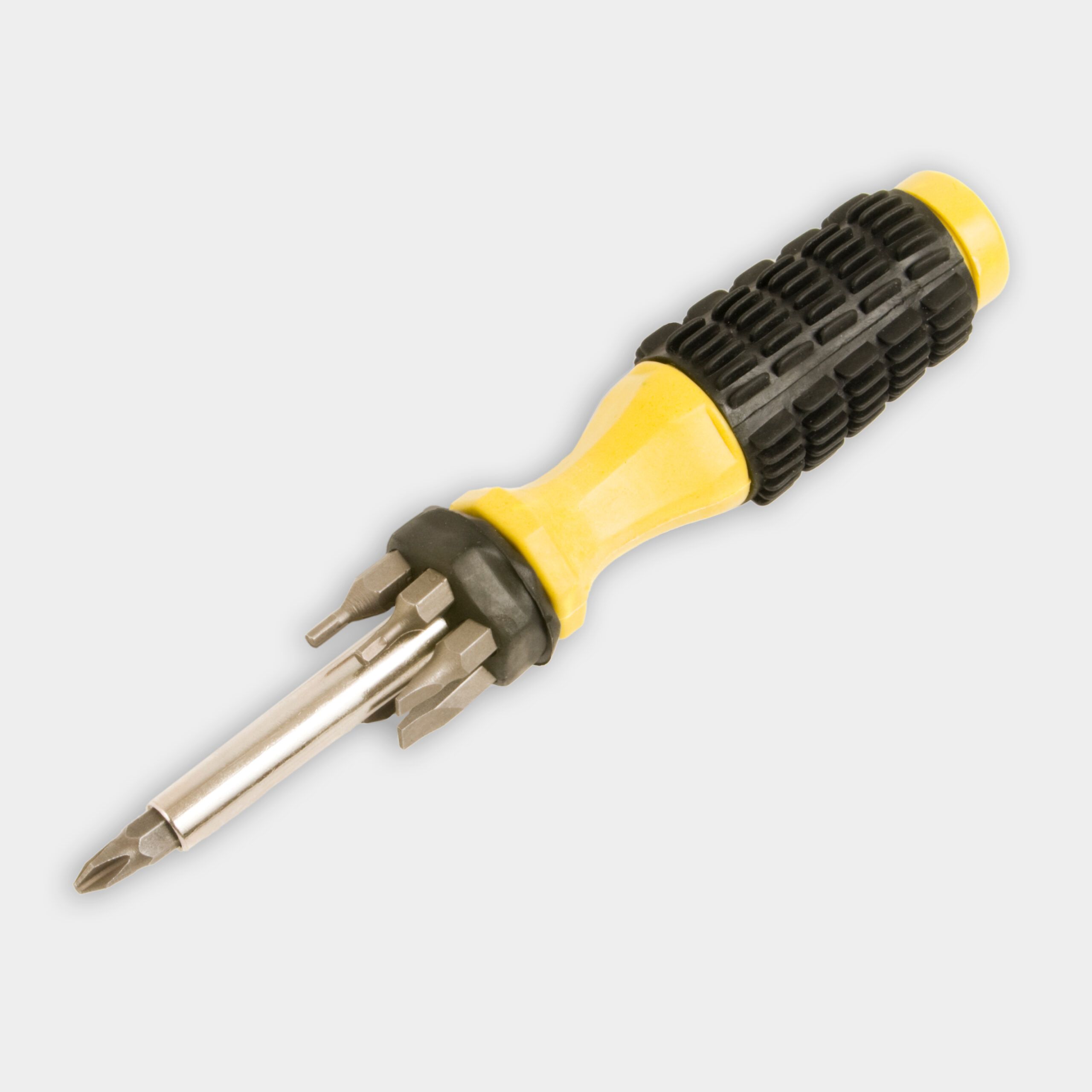We may be compensated if you purchase through links on our website. Our team is committed to delivering honest, objective, and independent reviews on home products and services.
Project details
Skill
Cost
Estimated Time
Upgrading ungrounded two-prong outlets to modern grounded receptacles is an important safety measure for any home. That third prong provides a path for excess electrical current, minimizing the risk of shock and fire. We’ll explore three different ways to ground two-prong outlets and bring your home’s electrical system up to code. In the video above, Ask This Old House master electrician Heath Eastman explains the purpose of a ground wire and then grounds an outlet for a homeowner.
Cost data sourced via Angi.
What Is a Grounded Outlet?
A grounded outlet has three prongs: two flat prongs for the hot and neutral wires, plus a round prong for the ground wire. This third prong provides a safe path for excess electrical current to flow back to the ground, protecting you from potential shocks and your devices from power surges.
Two-prong outlets lack the crucial ground connection, which can lead to several hazards:
- Damage to sensitive electronic devices
- Increased risk of electrical shock
- Non-compliance with electrical codes
- Potential for electrical fires
Ungrounded outlets can pose a serious threat, especially in homes with older wiring systems where grounding might be inconsistent or nonexistent. Ensuring that all outlets are grounded reduces these risks and brings your home up to modern safety standards.
Identifying Grounded vs. Ungrounded Outlets
Identifying ungrounded outlets is the first step in updating your home’s electrical system. There are three ways to identify ungrounded outlets:
- Visual inspection: The simplest way to identify an ungrounded outlet is by looking at it. If the outlet only has two prongs (one vertical and one slightly wider slot), it’s ungrounded. Grounded outlets will have three prongs, including a round hole for grounding. However, Eastman notes that not all outlets with three prongs are grounded.
- Three-prong tester: A three-prong tester is a small device that plugs into the outlet to check its grounding status. When plugged in, the tester lights up to indicate whether the outlet is properly grounded or if there are wiring issues.
- Multimeter: A multimeter is a more advanced tool used to measure the electrical voltage and resistance in an outlet. To check grounding, set the multimeter to AC voltage mode and test between the hot (smaller slot) and ground (round hole) prong. If there’s no reading, the outlet is likely ungrounded.
Options for Grounding Two-Prong Outlets
You have a few different options for grounding two-prong outlets. The best method depends on your needs, budget, and the condition of your electrical system. No matter which method you choose, this project should only be completed by a professional due to the risks of electrical work.
Installing a New Grounded Circuit
The most comprehensive solution is to install a new grounded circuit from your electrical panel to the outlet. This involves three steps:
- Run a new electrical cable with a ground wire.
- Install a new three-prong receptacle.
- Connect the ground wire to the outlet and the grounding bar in your electrical panel.
Installing a new grounded circuit can be costly and may require opening walls to run new wiring. However, it ensures that your entire electrical system is up to code and provides the highest level of safety.
Using a Ground Fault Circuit Interrupter (GFCI)
If running new wiring isn’t feasible, installing a GFCI outlet is an acceptable alternative. GFCIs detect ground faults and quickly shut off power to prevent shocks. You can install a GFCI in four steps:
- Turn off the power to the circuit.
- Remove the old two-prong outlet.
- Install the GFCI outlet according to manufacturer instructions.
- Label the outlet as “GFCI Protected” and “No Equipment Ground.”
This solution provides added safety without the need for extensive rewiring. However, it doesn’t provide the same level of protection as a fully grounded outlet.
Grounding to a Metal Box
In some cases, if the outlet box is metal and properly connected to the ground, you can ground the outlet to the box. Here’s what to do:
- Verify that the metal box is grounded.
- Install a grounding clip or pigtail to connect the outlet’s ground screw to the box.
- Install a three-prong receptacle.
This is a practical solution when the existing metal box is already grounded, saving time and effort. Verify the metal box is grounded to avoid potential hazards.
Steps for Replacing Two-Prong Electrical Outlets
In most cases, grounding a receptacle means running new wiring with a ground wire in it. Here’s an overview of the process of replacing a two-prong electrical outlet:
- Turn off the power: Shut off power to the circuit at the main electrical panel.
- Remove the old outlet: Carefully unscrew and pull out the old two-prong outlet.
- Inspect the wiring: Check the existing wiring for a ground wire, which may be hidden in the back of the box.
- Connect the ground wire (or consider alternatives): If a ground wire is present, connect it to the new three-prong outlet’s ground screw. If no ground wire is present, consider installing a GFCI outlet or hire an electrician to run the new wiring.
- Connect the wires: Attach the hot (black) and neutral (white) wires to the appropriate terminals on the new outlet.
- Secure the outlet: Fasten the new outlet in the box and replace the cover plate.
- Restore power: Restore power and test the outlet with a circuit tester to ensure proper installation.
In the video, Eastman demonstrates how to run new wiring from the electrical panel to create a properly grounded circuit. This method ensures that the outlet is fully compliant with modern electrical codes and provides the highest level of safety.
Remember, working with electrical systems can be dangerous. Always turn off the power at the circuit breaker before working on outlets. Use a voltage tester to confirm the power is off before touching any wires. We recommend wearing insulated gloves and using insulated tools.
When To Call a Professional Electrician
Consulting a licensed electrician is often the best course of action, especially for complex or large-scale projects. For instance, older homes might have outdated wiring that doesn’t easily accommodate modern upgrades. In these cases, running new wiring might be more complex and require professional assistance. Homes with finished basements or limited access to wall cavities might also require specialized tools and techniques to run new cables.
Consider hiring a licensed electrician if any of the following statements apply:
- You’re not experienced with electrical work.
- Your home has outdated wiring.
- You need to run new wiring through the walls.
- You’re unsure about local electrical codes.
A professional can ensure the job is done safely and up to code, saving you time and preventing costly mistakes. You might also consider bundling this project with other upgrades—such as replacing your electrical panel, adding additional circuits, or installing surge protection—to save money.
Resources
Any work that involves working on the electrical panel can be dangerous and should only be done by a licensed professional.
In this scenario, Eastman found that none of the surrounding receptacles or their wiring were to code, so he removed and replaced them with a 12-2 NM cable and a single GFCI outlet. These materials can be found at any home center or electrical supply store.
Expert assistance with this segment was provided by Eaton and Eastman Electric.



